Bacterial meningitis is a significant world trigger of morbidity and mortality. Rapid identification of the aetiological agent of meningitis is crucial for scientific and public well being administration and illness prevention given the wide selection of pathogens that trigger the scientific syndrome and the availability of vaccines that shield in opposition to some, however not all, of these. Small variations in essential check parameters (quantity of extraction reagent and quantity of extracted DNA pattern) didn’t adversely have an effect on the assay’s efficiency, and stability testing indicated constant outcomes for a minimum of one 12 months.
Since microbiological tradition is advanced, sluggish, and sometimes impacted by prior antimicrobial therapy of the affected person, molecular diagnostic assays have been developed for bacterial detection. Distinguishing between meningitis attributable to Neisseria meningitidis (meningococcus), Streptococcus pneumoniae (pneumococcus), Haemophilus influenzae, and Streptococcus agalactiae and figuring out their polysaccharide capsules is particularly necessary. Here, we review strategies utilized in the identification of these micro organism, offering an up-to-date account of accessible assays, permitting clinicians and diagnostic laboratories to make knowledgeable choices about which assays to make use of.
Matrix research, inclusivity/exclusivity, product consistency and stability, and robustness testing have been carried out to evaluate the methodology’s efficiency. In the matrix research, this methodology was in comparison with the U.S. Food and Drug Administration Bacteriological Analytical Manual (BAM) Chapter 10 (1) for environmental floor sponges and swabs. Inclusivity and exclusivity testing confirmed that the MEMP Listeria Assay was capable of detect all 75 Listeria strains examined whereas excluding the 30 non-Listeria species. There have been no statistically vital variations discovered between the candidate and reference strategies.
Molecular diagnostic of toxigenic Corynebacterium diphtheriae pressure by DNA sensor doubtlessly appropriate for electrochemical point-of-care diagnostic
The offered examine is concentrated on the improvement of electrochemical genosensor for detection of tox gene fragment of toxigenic Corynebacterium diphtheriae pressure. Together with our earlier research it fulfils the entire process for quick and correct diagnostic of diphtheria at its early stage of an infection with the use of electrochemical strategies. The developed DNA sensor doubtlessly can be utilized in additional refined moveable machine.
After the electrochemical stem-loop probe construction optimization the circumstances for actual uneven PCR (aPCR) product detection have been chosen. As was proven it was essential to optimize the magnesium and natural solvent concentrations in detection buffer. Under optimum circumstances it was doable to selectively detect as little as 20.eight nM of complementary stand in 5 min or 0.5 nM in 30 min with sensitivity of 12.81 and 0.24 1⋅μM-1 respectively. We current a collection of twelve pediatric benign tumors with rhabdomyomatous differentiation together with seven rhabdomyomatous mesenchymal hamartomas, 4 fetal rhabdomyomas, and one benign triton tumor, analyzing myogenic markers in addition to clinicopathologic and molecular options.
The unspecific biosensor response was elucidated with the use of new electrode blocking agent, diethyldithiocarbamate. Its utility in electrochemical genosensors result in vital increased present values and the biosensor response even in circumstances with magnesium ion depletion. The developed biosensor selectivity was examined utilizing samples containing genetic materials originated from a quantity of non-target bacterial species which doubtlessly might be current in the human higher respiratory tract.

Comparative Genomics of Mycoplasma synoviae and New Targets for Molecular Diagnostics
Mycoplasma synoviae is a crucial pathogen of poultry, inflicting vital financial losses on this trade. Analysis of the distinctive genes and shared genes amongst totally different M. synoviae strains and amongst associated species is useful for learning the molecular pathogenesis of M. synoviae and supplies precious molecular diagnostic targets to facilitate the identification of M. synoviae species. We chosen a complete of 46 strains, together with six M. synoviae strains, from 25 main animal (together with avian) Mycoplasma species/subspecies that had full genome sequences and annotation data revealed in GenBank, and used them for comparative genomic evaluation.
After evaluation, 16 common genes have been present in the 46 strains. Thirteen single-copy core genes and the 16s rRNA genes have been used for genetic evolutionary evaluation. M. synoviae was discovered to have a distant evolutionary relationship not solely with different arthritis-causing mycoplasmas, but additionally with one other main avian pathogen, Mycoplasma gallisepticum, that shares the main virulence issue vlhA with M. synoviae. Subsequently, six distinctive coding genes have been recognized as shared amongst these M. synoviae strains which can be absent in different species with revealed genome sequences.
Two of the genes have been discovered to be situated in the genetically steady areas of the genomes of M. synoviae and have been decided to be current in all M. synoviae remoted strains (n = 20) and M. synoviae-positive scientific samples (n = 48) preserved in our laboratory. These two genes have been used as molecular diagnostic targets for which SYBR inexperienced quantitative PCR detection strategies have been designed. The two quantitative PCR strategies exhibited good reproducibility and excessive specificity when examined on constructive plasmid controls and genomic DNA extracted from totally different M. synoviae strains, different main avian pathogenic micro organism/mycoplasmas, and low pathogenic Mycoplasma species.
) TritonX-100 (Molecular Biology Grade) |
|
CE241 |
GeneOn |
1 l |
EUR 79.2 |
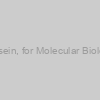 Casein, for Molecular Biology |
|
MB279-100G |
EWC Diagnostics |
1 unit |
EUR 110.77 |
|
Description: Casein, for Molecular Biology |
 Casein, for Molecular Biology |
|
MB279-500G |
EWC Diagnostics |
1 unit |
EUR 387.65 |
|
Description: Casein, for Molecular Biology |
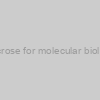 Sucrose for molecular biology |
|
27580 |
Sisco Laboratories |
500 Gms |
EUR 4.11 |
|
|
|
Description: Part A |
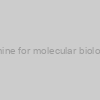 Triethylamine for molecular biology, 99.5% |
|
55221 |
Sisco Laboratories |
500 ml |
EUR 4.11 |
|
|
|
Description: Part A |
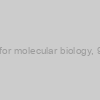 Urea for molecular biology, 99.5% |
|
21113 |
Sisco Laboratories |
500 Gms |
EUR 6.5 |
|
|
|
Description: Part A |
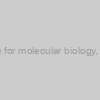 Xylene for molecular biology, 99.5% |
|
45122 |
Sisco Laboratories |
250 ml |
EUR 2.81 |
|
|
|
Description: Part A |
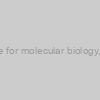 Acetone for molecular biology, 99.8% |
|
27498 |
Sisco Laboratories |
500 ml |
EUR 3.76 |
|
|
|
Description: Part A |
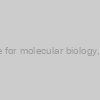 Glycine for molecular biology, 99.5% |
|
64072 |
Sisco Laboratories |
100 Gms |
EUR 1.64 |
|
|
|
Description: Part A |
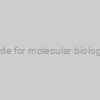 Formamide for molecular biology, 99.5% |
|
30349 |
Sisco Laboratories |
500 ml |
EUR 5.82 |
|
|
|
Description: Part A |
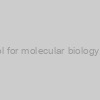 Carbinol for molecular biology, 99.5% |
|
34883 |
Sisco Laboratories |
500 ml |
EUR 6.23 |
|
|
|
Description: Part A |
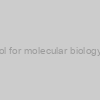 Methanol for molecular biology, 99.5% |
|
96446 |
Sisco Laboratories |
500 ml |
EUR 6.23 |
|
|
|
Description: Part A |
 Imidazole for molecular biology, 99.5% |
|
61510 |
Sisco Laboratories |
25 Gms |
EUR 5.47 |
|
|
|
Description: Part A |
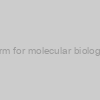 Chloroform for molecular biology, 99.8% |
|
96764 |
Sisco Laboratories |
100 ml |
EUR 3.08 |
|
|
|
Description: Part A |
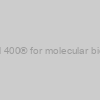 Ficoll 400® for molecular biology |
|
45460 |
Sisco Laboratories |
5 Gms |
EUR 15.6 |
|
|
|
Description: Part B |
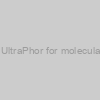 Agarose UltraPhor for molecular biology |
|
27813 |
Sisco Laboratories |
10 Gms |
EUR 46.5 |
|
|
|
Description: Part B |
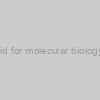 Boric Acid for molecular biology, 99.5% |
|
22311 |
Sisco Laboratories |
250 Gms |
EUR 4.04 |
|
|
|
Description: Part A |
 2-Mercaptoethanol ?For Molecular Biology |
|
MB041-100ML |
EWC Diagnostics |
1 unit |
EUR 9.02 |
|
Description: 2-Mercaptoethanol ?For Molecular Biology |
 2-Mercaptoethanol ?For Molecular Biology |
|
MB041-500ML |
EWC Diagnostics |
1 unit |
EUR 26.47 |
|
Description: 2-Mercaptoethanol ?For Molecular Biology |
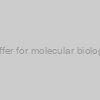 ACES Buffer for molecular biology, 99.5% |
|
27907 |
Sisco Laboratories |
5 Gms |
EUR 5.4 |
|
|
|
Description: Part B |
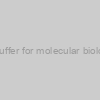 MOPS Buffer for molecular biology, 99% |
|
66043 |
Sisco Laboratories |
25 Gms |
EUR 10.28 |
|
|
|
Description: Part B |
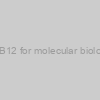 Vitamin B12 for molecular biology, 97% |
|
77472 |
Sisco Laboratories |
250 Mg |
EUR 5.78 |
|
|
|
Description: Part B |
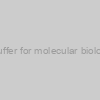 HEPES Buffer for molecular biology, 99.5% |
|
16826 |
Sisco Laboratories |
25 Gms |
EUR 6.3 |
|
|
|
Description: Part B |
 Sodium Azide for molecular biology, 99% |
|
17782 |
Sisco Laboratories |
100 Gms |
EUR 5.47 |
|
|
|
Description: Part A |
 CHAPS Buffer for molecular biology, 99.5% |
|
21420 |
Sisco Laboratories |
1 Gms |
EUR 10.73 |
|
|
|
Description: Part B |
 Agarose Low EEO for molecular biology |
|
36601 |
Sisco Laboratories |
10 Gms |
EUR 5.1 |
|
|
|
Description: Part B |
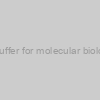 PIPES Buffer for molecular biology, 99% |
|
49159 |
Sisco Laboratories |
100 Gms |
EUR 26.03 |
|
|
|
Description: Part B |
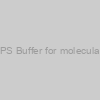 10X MOPS Buffer for molecular biology |
|
68078 |
Sisco Laboratories |
100 ml |
EUR 4.5 |
|
|
|
Description: Part B |
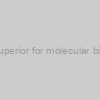 Tris Buffer Superior for molecular biology, 99.9% |
|
37969 |
Sisco Laboratories |
100 Gms |
EUR 7.59 |
|
|
|
Description: Part A |
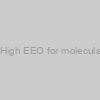 Agarose High EEO for molecular biology |
|
60645 |
Sisco Laboratories |
25 Gms |
EUR 13.8 |
|
|
|
Description: Part B |
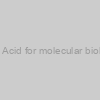 Jasmonic Acid for molecular biology, 95% |
|
79238 |
Sisco Laboratories |
25 Mg |
EUR 120.9 |
|
|
|
Description: Part B |
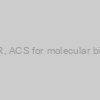 Tris Buffer AR, ACS for molecular biology, 99.9% |
|
71033 |
Sisco Laboratories |
100 Gms |
EUR 6.02 |
|
|
|
Description: Part A |
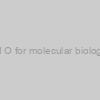 Oil Red O for molecular biology, 75% |
|
23576 |
Sisco Laboratories |
25 Gms |
EUR 5.33 |
|
|
|
Description: Part B |
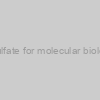 Protamine Sulfate for molecular biology, 90-110% |
|
78349 |
Sisco Laboratories |
1 Gms |
EUR 22.5 |
|
|
|
Description: Part B |
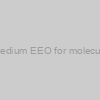 Agarose Medium EEO for molecular biology |
|
10423 |
Sisco Laboratories |
10 Gms |
EUR 6.75 |
|
|
|
Description: Part B |
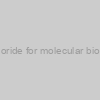 Sodium Chloride for molecular biology, 99.9% |
|
33205 |
Sisco Laboratories |
500 Gms |
EUR 4.52 |
|
|
|
Description: Part A |
 for molecular biology, 99.8%) Isopropanol (IPA) for molecular biology, 99.8% |
|
38445 |
Sisco Laboratories |
100 ml |
EUR 1.71 |
|
|
|
Description: Part A |
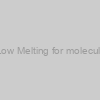 Agarose Low Melting for molecular biology |
|
32417 |
Sisco Laboratories |
5 Gms |
EUR 22.5 |
|
|
|
Description: Part B |
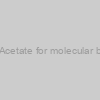 Ammonium Acetate for molecular biology, 98% |
|
37829 |
Sisco Laboratories |
100 Gms |
EUR 2.12 |
|
|
|
Description: Part A |
 for molecular biology, 99.9%) Acetonitrile (ACN) for molecular biology, 99.9% |
|
62006 |
Sisco Laboratories |
250 ml |
EUR 4.93 |
|
|
|
Description: Part A |
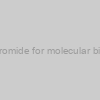 Ethidium Bromide for molecular biology, 95% |
|
93079 |
Sisco Laboratories |
1 Gms |
EUR 4.58 |
|
|
|
Description: Part A |
) RNase/DNase free water, for molecular biology (10 x 1.5ml) |
|
Z-RNase/DNase-free-water |
Novacyt Group |
n/a |
EUR 62 |
 for molecular biology, 99.9%) Trifluoroacetic Acid (TFA) for molecular biology, 99.9% |
|
40801 |
Sisco Laboratories |
100 ml |
EUR 22.92 |
|
|
|
Description: Part A |
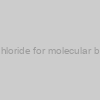 Ammonium Chloride for molecular biology, 99.5% |
|
16992 |
Sisco Laboratories |
500 Gms |
EUR 4.52 |
|
|
|
Description: Part A |
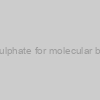 Ammonium Sulphate for molecular biology, 99.5% |
|
82126 |
Sisco Laboratories |
250 Gms |
EUR 4.93 |
|
|
|
Description: Part A |
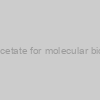 Potassium Acetate for molecular biology, 99.5% |
|
96248 |
Sisco Laboratories |
100 Gms |
EUR 2.74 |
|
|
|
Description: Part A |
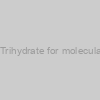 Sodium Acetate Trihydrate for molecular biology, 99.5% |
|
88035 |
Sisco Laboratories |
250 Gms |
EUR 2.33 |
|
|
|
Description: Part A |
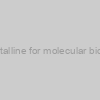 Phenol Crystalline for molecular biology, 99.5% |
|
17286 |
Sisco Laboratories |
100 Gms |
EUR 3.15 |
|
|
|
Description: Part A |
 Sodium Bicarbonate for molecular biology, 99.7% |
|
36328 |
Sisco Laboratories |
500 Gms |
EUR 5.47 |
|
|
|
Description: Part A |
 for molecular biology, 99.5%) Glycerol (Glycerine) for molecular biology, 99.5% |
|
62417 |
Sisco Laboratories |
100 ml |
EUR 2.05 |
|
|
|
Description: Part A |
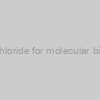 Potassium Chloride for molecular biology, 99.5% |
|
84984 |
Sisco Laboratories |
500 Gms |
EUR 6.16 |
|
|
|
Description: Part A |
 for molecular biology, 99.9%) Dichloromethane (DCM) for molecular biology, 99.9% |
|
41512 |
Sisco Laboratories |
250 ml |
EUR 3.22 |
|
|
|
Description: Part A |
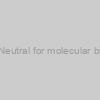 Acriflavine Neutral for molecular biology, 98% |
|
42428 |
Sisco Laboratories |
5 Gms |
EUR 3.15 |
|
|
|
Description: Part B |
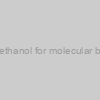 2-Mercaptoethanol for molecular biology, 99% |
|
83759 |
Sisco Laboratories |
100 ml |
EUR 5.27 |
|
|
|
Description: Part A |
 for molecular biology, 99.8%) Tetrahydrofuran (THF) for molecular biology, 99.8% |
|
92562 |
Sisco Laboratories |
250 ml |
EUR 3.28 |
|
|
|
Description: Part A |
 for molecular biology, 99%) Dithioerythritol (DTE) for molecular biology, 99% |
|
53384 |
Sisco Laboratories |
1 Gms |
EUR 9.53 |
|
|
|
Description: Part B |
 for molecular biology, 99%) Tris Hydrochloride (Tris HCl) for molecular biology, 99% |
|
89781 |
Sisco Laboratories |
100 Gms |
EUR 9.37 |
|
|
|
Description: Part A |
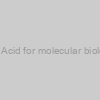 L-Ascorbic Acid for molecular biology, 99.7% |
|
14116 |
Sisco Laboratories |
25 Gms |
EUR 1.64 |
|
|
|
Description: Part A |
 HEPES Sodium Salt for molecular biology, 99% |
|
32225 |
Sisco Laboratories |
25 Gms |
EUR 11.85 |
|
|
|
Description: Part B |
 for molecular biology, 98%) meta-Topolin (mT) for molecular biology, 98% |
|
68913 |
Sisco Laboratories |
25 Mg |
EUR 17.48 |
|
|
|
Description: Part B |
 for molecular biology) 10X Tris Buffered Saline (TBS) for molecular biology |
|
83471 |
Sisco Laboratories |
500 ml |
EUR 14.7 |
|
|
|
Description: Part B |
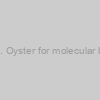 Glycogen ex. Oyster for molecular biology, 85% |
|
49740 |
Sisco Laboratories |
1 Gms |
EUR 7.5 |
|
|
|
Description: Part B |
 for molecular biology, 95%) Propidium Iodide (PI) for molecular biology, 95% |
|
11195 |
Sisco Laboratories |
10 Mg |
EUR 17.63 |
|
|
|
Description: Part B |
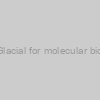 Acetic Acid Glacial for molecular biology, 99.9% |
|
59788 |
Sisco Laboratories |
100 ml |
EUR 3.56 |
|
|
|
Description: Part A |
 Acrylamide 3x cryst. for molecular biology, 99.9% |
|
61346 |
Sisco Laboratories |
100 Gms |
EUR 5.47 |
|
|
|
Description: Part A |
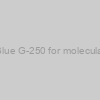 Brilliant Blue G-250 for molecular biology |
|
64222 |
Sisco Laboratories |
5 Gms |
EUR 4.65 |
|
|
|
Description: Part B |
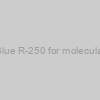 Brilliant Blue R-250 for molecular biology |
|
93473 |
Sisco Laboratories |
5 Gms |
EUR 4.35 |
|
|
|
Description: Part B |
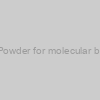 D-Sorbitol Powder for molecular biology, 98% |
|
99103 |
Sisco Laboratories |
500 Gms |
EUR 10.33 |
|
|
|
Description: Part A |
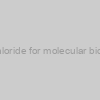 Acriflavine Hydrochloride for molecular biology, 98.5%-105% |
|
35188 |
Sisco Laboratories |
5 Gms |
EUR 4.05 |
|
|
|
Description: Part B |
 for molecular biology) Polysorbate 20 (Tween 20) for molecular biology |
|
65296 |
Sisco Laboratories |
100 Gms |
EUR 10.81 |
|
|
|
Description: Part A |
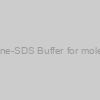 10X Tris-Tricine-SDS Buffer for molecular biology |
|
37852 |
Sisco Laboratories |
500 ml |
EUR 9.08 |
|
|
|
Description: Part B |
 10X Tris-Glycine-SDS Buffer for molecular biology |
|
57806 |
Sisco Laboratories |
200 ml |
EUR 3.6 |
|
|
|
Description: Part B |
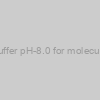 10X TE Buffer pH-8.0 for molecular biology |
|
51782 |
Sisco Laboratories |
100 ml |
EUR 9.45 |
|
|
|
Description: Part B |
 10X TAE Buffer pH-8.3 for molecular biology |
|
71989 |
Sisco Laboratories |
100 ml |
EUR 4.43 |
|
|
|
Description: Part B |
 10X TBE Buffer pH-8.3 for molecular biology |
|
83170 |
Sisco Laboratories |
200 ml |
EUR 4.95 |
|
|
|
Description: Part B |
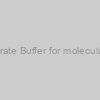 MES Monohydrate Buffer for molecular biology, 99% |
|
26854 |
Sisco Laboratories |
25 Gms |
EUR 11.03 |
|
|
|
Description: Part B |
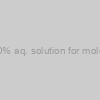 Acrylamide 40% aq. solution for molecular biology |
|
29787 |
Sisco Laboratories |
250 ml |
EUR 20.53 |
|
|
|
Description: Part A |
 Molecular Biology Grade Water for RT-PCR |
|
ML065-1.5ML |
EWC Diagnostics |
1 unit |
EUR 7.82 |
|
Description: Molecular Biology Grade Water for RT-PCR |
 for molecular biology, 99.5%) Glutathione Reduced (GSH) for molecular biology, 99.5% |
|
11514 |
Sisco Laboratories |
1 Gms |
EUR 5.55 |
|
|
|
Description: Part B |
 for molecular biology, 98%) DL-Dithiothreitol (DTT) for molecular biology, 98% |
|
17315 |
Sisco Laboratories |
1 Gms |
EUR 5.18 |
|
|
|
Description: Part B |
 Sodium Acetate Anhydrous for molecular biology, 99% |
|
22342 |
Sisco Laboratories |
250 Gms |
EUR 3.56 |
|
|
|
Description: Part A |
 for molecular biology, 99.8%) Dimethyl Sulphoxide (DMSO) for molecular biology, 99.8% |
|
24075 |
Sisco Laboratories |
100 ml |
EUR 6.02 |
|
|
|
Description: Part A |
 for molecular biology, 99%) Ammonium Persulphate (APS) for molecular biology, 99% |
|
65553 |
Sisco Laboratories |
25 Gms |
EUR 1.64 |
|
|
|
Description: Part A |
 for molecular biology, 99.5%) Glutathione Oxidized (GSSG) for molecular biology, 99.5% |
|
22151 |
Sisco Laboratories |
250 Mg |
EUR 22.5 |
|
|
|
Description: Part B |
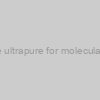 Cesium Chloride ultrapure for molecular biology, 99.9% |
|
32355 |
Sisco Laboratories |
25 Gms |
EUR 18 |
|
|
|
Description: Part B |
 Cesium Sulphate extrapure for molecular biology, 99.9% |
|
57455 |
Sisco Laboratories |
10 Gms |
EUR 7.5 |
|
|
|
Description: Part B |
 for molecular biology, 99%) Guanidine Thiocyanate (GTC) for molecular biology, 99% |
|
80272 |
Sisco Laboratories |
100 Gms |
EUR 5.47 |
|
|
|
Description: Part A |
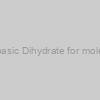 Sodium Citrate Tribasic Dihydrate for molecular biology, 99% |
|
67331 |
Sisco Laboratories |
250 Gms |
EUR 4.38 |
|
|
|
Description: Part A |
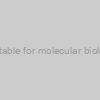 Pyridine, GlenBiol™, suitable for molecular biology with molecular sieve |
|
GS8780 |
Glentham Life Sciences |
2500ml |
EUR 239.63 |
 Pyridine, GlenBiol™, suitable for molecular biology with molecular sieve |
|
GS8780-2500 |
Glentham Life Sciences |
2500 |
EUR 249.8 |
|
|
 for molecular biology, 99%) Diethyl Pyrocarbonate (DEPC) for molecular biology, 99% |
|
46791 |
Sisco Laboratories |
5 ml |
EUR 9 |
|
|
|
Description: Part B |
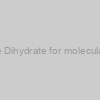 Calcium Chloride Dihydrate for molecular biology, 99.5% |
|
97080 |
Sisco Laboratories |
100 Gms |
EUR 2.12 |
|
|
|
Description: Part A |
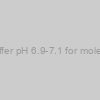 20X SSC Buffer pH 6.9-7.1 for molecular biology |
|
12590 |
Sisco Laboratories |
200 ml |
EUR 2.48 |
|
|
|
Description: Part B |
 for molecular biology) Polyethylene Glycol 8000 (PEG 8000) for molecular biology |
|
54866 |
Sisco Laboratories |
500 Gms |
EUR 11.97 |
|
|
|
Description: Part A |
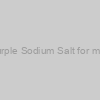 Bromocresol Purple Sodium Salt for molecular biology |
|
24836 |
Sisco Laboratories |
5 Gms |
EUR 2.05 |
|
|
|
Description: Part A |
 for molecular biology, 99.5%) Guanidine Hydrochloride (GHC) for molecular biology, 99.5% |
|
45539 |
Sisco Laboratories |
100 Gms |
EUR 4.79 |
|
|
|
Description: Part A |
 Phenol Tris Equilibrated for molecular biology w/ Stabilizer |
|
12692 |
Sisco Laboratories |
60 ml |
EUR 10.13 |
|
|
|
Description: Part A |
 for molecular biology, 30U/mg) Proteinase K ex. Tritirachium Album (Type A) for molecular biology, 30U/mg |
|
49936 |
Sisco Laboratories |
25 Mg |
EUR 8.25 |
|
|
|
Description: Part B |
 Magnesium Acetate Tetrahydrate for molecular biology, 99% |
|
50488 |
Sisco Laboratories |
100 Gms |
EUR 2.74 |
|
|
|
Description: Part A |
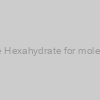 Magnesium Chloride Hexahydrate for molecular biology, 99.5% |
|
91417 |
Sisco Laboratories |
250 Gms |
EUR 4.45 |
|
|
|
Description: Part A |
 20X Tris Acetate-SDS Buffer pH-8.3 for molecular biology |
|
47804 |
Sisco Laboratories |
500 ml |
EUR 11.25 |
|
|
|
Description: Part B |
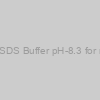 10X Tris Acetate-SDS Buffer pH-8.3 for molecular biology |
|
98635 |
Sisco Laboratories |
500 ml |
EUR 6 |
|
|
|
Description: Part B |
 Agarose Low EEO Superior Grade for molecular biology |
|
23287 |
Sisco Laboratories |
10 Gms |
EUR 6 |
|
|
|
Description: Part B |
 for molecular biology, 99%) L-Lysine Monohydrate (base) for molecular biology, 99% |
|
45976 |
Sisco Laboratories |
25 Gms |
EUR 37.63 |
|
|
|
Description: Part A |
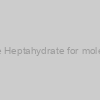 Magnesium Sulphate Heptahydrate for molecular biology, 99.5% |
|
74440 |
Sisco Laboratories |
500 Gms |
EUR 6.16 |
|
|
|
Description: Part A |
 10X Tris-Glycine pH-8.3 Tank Buffer for molecular biology |
|
87326 |
Sisco Laboratories |
200 ml |
EUR 6.3 |
|
|
|
Description: Part B |
 Cesium Chloride extrapure AR for molecular biology, 99.9% |
|
22966 |
Sisco Laboratories |
25 Gms |
EUR 14.63 |
|
|
|
Description: Part B |
 for molecular biology, 99.9%) N,N-Dimethylformamide (DMF) for molecular biology, 99.9% |
|
24017 |
Sisco Laboratories |
100 ml |
EUR 3.08 |
|
|
|
Description: Part A |
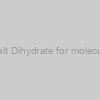 EDTA Disodium Salt Dihydrate for molecular biology, 99.5% |
|
43272 |
Sisco Laboratories |
100 Gms |
EUR 2.26 |
|
|
|
Description: Part A |
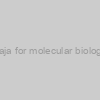 Saponin ex. Quillaja for molecular biology, 9% Sapogenin |
|
80967 |
Sisco Laboratories |
25 Gms |
EUR 45 |
|
|
|
Description: Part B |
 for molecular biology) Chloroform : Isoamyl Alcohol (24:1) for molecular biology |
|
85563 |
Sisco Laboratories |
100 ml |
EUR 8.48 |
|
|
|
Description: Part B |
 for molecular biology) 1X Phosphate Buffered Saline (PBS) for molecular biology |
|
95131 |
Sisco Laboratories |
100 ml |
EUR 3.98 |
|
|
|
Description: Part B |
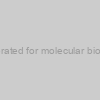 Phenol Tris Equilibrated for molecular biology w/o Stabilizer |
|
78348 |
Sisco Laboratories |
100 ml |
EUR 13.75 |
|
|
|
Description: Part A |
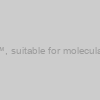 Dimethylformamide, GlenBiol™, suitable for molecular biology with molecular sieve |
|
GS3406 |
Glentham Life Sciences |
2500ml |
EUR 111.53 |
 Dimethylformamide, GlenBiol™, suitable for molecular biology with molecular sieve |
|
GS3406-2500 |
Glentham Life Sciences |
2500 |
EUR 116.2 |
|
|
The detection restrict for the two genes was 10 copies or much less per response. The scientific sensitivity and specificity of the quantitative PCR strategies have been each 100% primarily based on testing hen hock joint samples with constructive or destructive M. synoviae an infection. This analysis supplies a basis for the examine of species-specific variations and molecular prognosis of M. synoviae. A review of the literature was additionally carried out with an emphasis on myogenic marker expression and correlation with molecular options.
)








































 for molecular biology, 99.8%)


 for molecular biology, 99.9%)

)
 for molecular biology, 99.9%)






 for molecular biology, 99.5%)

 for molecular biology, 99.9%)


 for molecular biology, 99.8%)
 for molecular biology, 99%)
 for molecular biology, 99%)
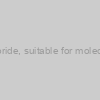



 for molecular biology, 98%)
 for molecular biology)
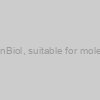

 for molecular biology, 95%)






 for molecular biology)








 for molecular biology, 99.5%)
 for molecular biology, 98%)

 for molecular biology, 99.8%)
 for molecular biology, 99%)
 for molecular biology, 99.5%)


 for molecular biology, 99%)







 for molecular biology, 99%)

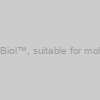



 for molecular biology)

 for molecular biology, 99.5%)

 for molecular biology, 30U/mg)





 for molecular biology, 99%)



 for molecular biology, 99.9%)


 for molecular biology)
 for molecular biology)





